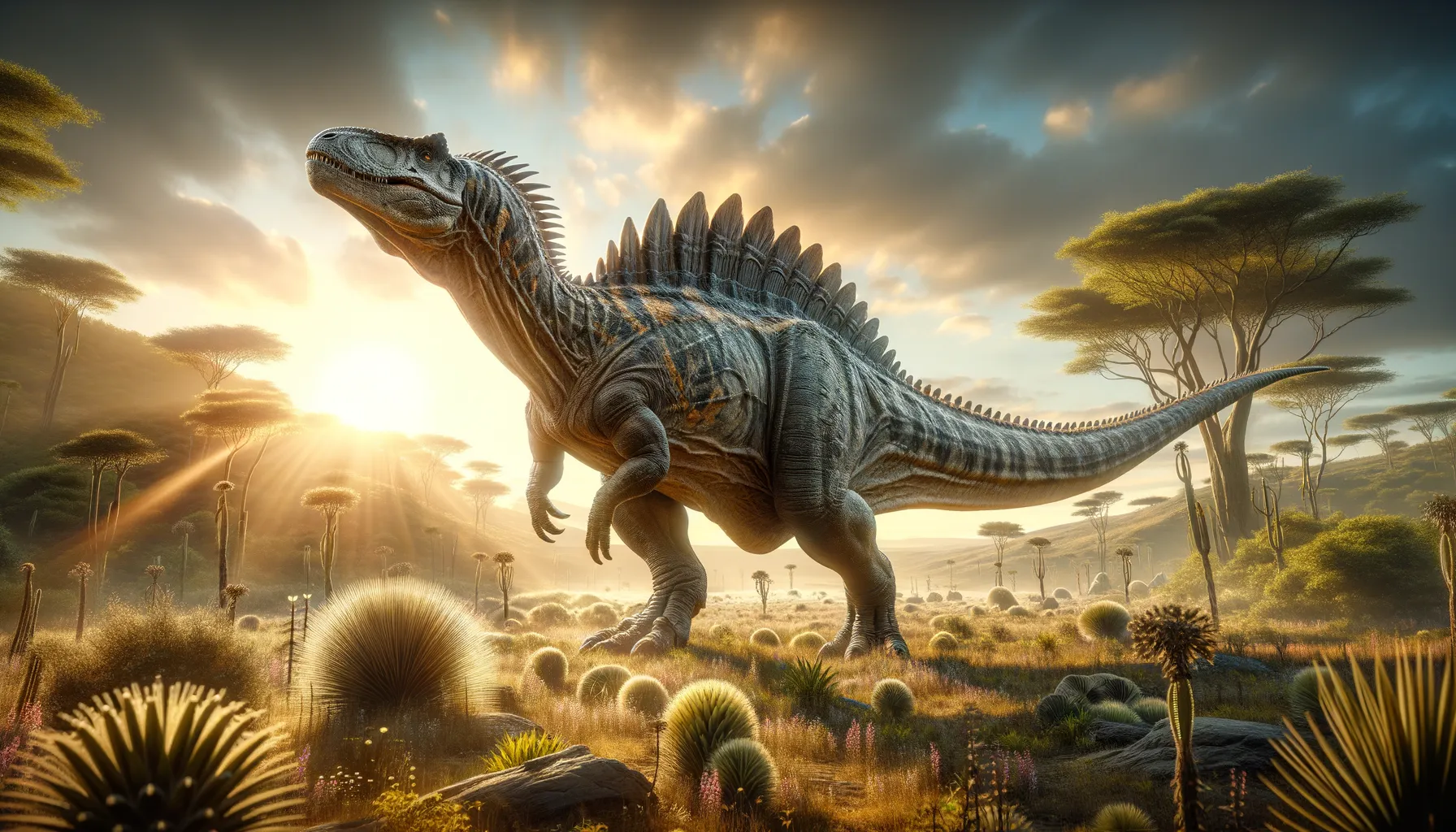
Tsagantegia
Armored survivor of prehistoric Mongolia.
Period
Cretaceous
Length
Approximately 5 meters long.
Height
Around 1 meter tall at the shoulders.
Weight
Estimated to weigh around 1 ton.
Tsagantegia was an armored dinosaur with a strong build, known for its defensive adaptations. It belonged to the ankylosaur family and thrived during the Cretaceous period. With sturdy limbs and a body covered in protective plates, it was well-suited to surviving in a challenging prehistoric environment. Its fossils offer insights into its way of life and the ecosystem it inhabited.
Diet
As a herbivore, Tsagantegia primarily fed on low-lying plants. Its diet consisted of ferns, cycads, and other vegetation that was abundant during its era. Its strong jaw and teeth allowed it to efficiently chew and digest tough plant material.
Hunting
Tsagantegia did not engage in hunting as it was a herbivore. Instead, it foraged for plants and possibly relied on its keen sense of smell to locate food. Its slow pace and heavy armor provided protection against predators while feeding.
Environmental challenges
The Cretaceous period presented Tsagantegia with the challenge of varying climates and competition for food resources. Seasonal changes required adaptation in finding sufficient food. Predators posed a constant threat, making its armored body vital for defense. The emergence of flowering plants also changed the landscape and possibly its dietary habits over time.
Speed
Relatively slow-moving due to its heavy armor.
Lifespan
Estimated to have lived up to several decades.
First discovery
First discovered in Mongolia in the mid-20th century.
Fun Facts
- Tsagantegia was a small plant-eating dinosaur that lived during the Late Cretaceous period.
- It was discovered in Mongolia, specifically in the Gobi Desert, which is a hotbed for dinosaur fossils.
- The name 'Tsagantegia' means 'from Tsagan Teeg', which is a reference to the location where it was found.
- Tsagantegia was an ankylosaur, a group of dinosaurs known for their armored bodies.
- Its armor helped protect it from predators, serving like a natural suit of armor.
- Unlike some of its relatives, Tsagantegia didn’t have a tail club, but it still had a heavily armored back.
- Scientists think Tsagantegia may have used its keen sense of smell to find food and stay safe from danger.
Growth and Development
Tsagantegia experienced growth phases where it developed stronger armor and a more robust physique. From a young age, it would have relied on group protection, growing more independent as it matured. Its growth rate is thought to have been steady, allowing it to adapt to environmental pressures gradually.
Habitat
Tsagantegia inhabited semi-arid regions with sparse vegetation. It preferred open spaces that provided plenty of room for movement and foraging. The presence of paleo-rivers and seasonal changes influenced its choice of habitat, as well as the availability of food sources. The landscape was shaped by volcanic activity and dinosaur fauna.
Interaction with other species
While mainly solitary or in small groups, Tsagantegia coexisted with larger herbivores and carnivores. Its primary interaction with predators involved avoiding conflict through passive defense tactics. It likely engaged in minimal interaction with other herbivores, focusing on feeding and maintaining its territory. Defensive displays were crucial for deterring competitors and predators.
Natural lifespan
Tsagantegia had a natural lifespan that likely extended over decades.
Reproduction
Tsagantegia most likely laid eggs, as inferred from related species. Parental care might have been minimal after hatching, with young relying on natural instincts and group protection. Nesting areas were possibly chosen for their security and access to food sources.
Social behaviour
Primarily solitary, with occasional small group interactions for mating or protection. Communication was likely through visual and possibly vocal signals during encounters. Displays of armored features helped reduce conflict amongst peers. Defensive behavior was geared towards avoiding predators rather than engaging in social hierarchies.
Fossil locations
Fossils of Tsagantegia have mainly been found in Mongolia. The discoveries occurred in sedimentary deposits rich in ancient flora and fauna remains. Such locations provide vital context for understanding its ecological niche. Ongoing research continues to reevaluate and discover new fossil sites within the region.
